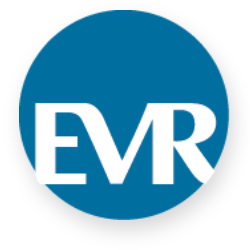Note to healthcare marketers: Please feel free to pass along this analysis of the recruitment process to your HR peers.
Starting in April 2021, over four million Americans quit their jobs—a period known as “The Great Resignation”—and that trend isn’t showing signs of slowing down. In fact, according to the Bureau of Labor Statistics, in each month from May–September 2022, another four million Americans quit their jobs. As a result, employers have struggled to fill open positions, and workers are increasingly being stretched too thin.
While the impact of labor shortages reaches every industry, nowhere is the problem more evident than in the healthcare industry. According to a 2022 survey by Elsevier Health, 47% of clinicians said they would leave their jobs in the next two to three years. In addition, more than 30% of the nurses surveyed by Incredible Health said it was very likely that they would quit their jobs by the end of 2022. According to industry forecasts, there will be a shortage of up to 3.2 million healthcare workers by 2026.
The Old Ways Don’t Work
The healthcare industry has been ramping up recruiting efforts, with more than 75% of hospitals saying they have offered better health benefits, higher wages and sign-on bonus programs over the past year. Yet, vacancies continue to grow.
Many organizations have turned to travel nurses to help fill staff shortages at a high cost: Pre-pandemic, the average R.N. salary was $73,000/year or $1,400/week. Travel nurses have been paid between $5,000 and $10,000 per week for working at hospitals.
So, hospitals and healthcare facilities are offering higher wages and benefits for newly recruited nurses while also hiring travel nurses to fill the gaps, which is an unsustainable model. And still, shortages continue.
It’s clear traditional recruitment methods no longer work well enough on their own, and that healthcare employers must try new ways to recruit employees. But where to start? Expertise from healthcare marketing agencies can help.
It’s now an employee market. Registered nurses at any level are in such high demand that they can work anywhere they want. So why should they choose to work at your hospital? What’s the incentive? There’s no one-size-fits-all solution. Instead, it takes approaching the problem in new ways, which differs for every organization.
For years, recruiting meant posting openings on job sites and waiting for the applications to come in. But the truth is that only about 50 percent of applicants today come from job boards. And because some job seekers think applying to as many jobs as possible will help get them a job, many of those who apply are probably unqualified for your positions.
On the other hand, if you use an applicant tracking system, such as Workable or Jobvite, many qualified applicants may fall through the cracks because a résumé error could prevent applicants from getting through to a hiring manager.
Personalization
When recruiting for healthcare openings, you’re not looking for just anybody. Instead, you are looking for a person who fits your organization’s culture and has a specific skill set, experience and training.
Personalization will make the difference.
Think of it this way: Do you prefer an email to “Whom It May Concern” or an email that is addressed to you, using your first name (hopefully spelled correctly)?
For most people, it’s the latter.
That’s because personalization makes people feel special. When you get something addressed specifically to you, it feels out of the ordinary. It says, “You’re not just like everyone else,” and “we are talking to you because you’re special.”
And humans respond to that in a big way. Candidates are tired of being treated as nothing more than a résumé. When you personalize your communications, it will surprise and impress them. It sets a tone for your brand and makes them more likely to consider you a viable option.
Strong personalization goes beyond just getting the name right; in recruiting, you need to show you know their background and skills. Unfortunately, bulk-mailing job listings won’t work in today’s climate.
You must know who your candidates are: their pain points, desires, what makes them happy and what they’re looking for in a job. The Internet and platforms such as Facebook and LinkedIn are likely to have much of the information you need.
After all, it’s what your marketing and sales departments are probably doing to bring in customers. And that’s how you should treat candidates—as customers.
Your marketing and sales teams are likely learning about who is the best fit for what they are promoting, creating personas (fictionalized representations of their very best prospect) and creating compelling messaging that speaks directly to them, not at them.
Recruiters can also use personas to find qualified candidates. To create a strong persona, you must gather demographic and psychographic information and build your prospect from the ground up. The result is a profile of your ideal candidate, who they are, their challenges, sources of information, aspirations, hopes and attitudes.
Only then can you truly personalize your recruitment and healthcare content marketing efforts and send the right message to the right person in the right place at the right time. And that’s how you find that proverbial needle in the haystack.
Recruitment Channels
You won’t find qualified candidates in all the same old places, such as on job boards and social media. Instead, you will have to look at search engine optimization and paid advertising to break through the noise.
Social Media
In recent years, the ease of using social media has led recruiters to add Facebook, LinkedIn and other social platforms to the hiring mix.
While healthcare social media marketing is one good way to source applicants, on its own, it isn’t the only answer, because there is often a disconnect between where employers think is the best place to reach candidates and where the candidates are.
For instance, 92 percent of employers use social media sites to find employees, yet only 57 percent of job seekers specifically look for jobs on those sites. The important thing is to understand who is on which social platform.
Potential applicants are spread over several platforms, so using only one social platform for your recruitment efforts won’t get optimal results.
What does this mean? As an example, if you need stateside candidates ages 35–54 to fill a $50,000-a-year job, you may have better luck with another social platform instead of, or in addition to, LinkedIn.
The Importance of SEO
SEO is often overlooked in recruitment because it works behind the scenes.
But SEO is tremendously important; it’s how people find what they’re looking for on the Internet. Search engines such as Google, Bing and Yahoo use bots (spiders or crawlers) to look at sites, scan pages and index the information.
Various signals or factors determine how the pages are indexed and where they should appear on search engine results pages (SERPs) to match a specific query. The search engine finds the most relevant results for a query using extremely complex algorithms.
That’s why keywords are important when crafting web and ad copy, blogs and other digital materials. Web pages and keywords (used naturally) tell the crawlers what the page is about so the search engine can properly index the information and serve it up in response to queries.
Long-tail niche keywords (specific phrases comprising several words) are extremely helpful for finding those hidden gems you seek. These keywords will bring in less traffic, but that traffic will be more precisely targeted and of higher quality.
Suppose you are looking for a nephrology nurse. If you used only the keyword “nurse” in your digital ads, you might get 10,000 clicks to your landing page. But they will come from people searching a range of nursing-related topics, such as LPN, hospice nurses, nurses for home care, nursing schools, definitions of nurse, news about nurses, nurse careers and nurse requirements, among many others.
But what if your ads had the keyword phrase “hospital jobs for nephrology nurses”? You may only get 100 clicks, but they would be almost entirely by people looking for information about hospital jobs for nephrology nurses. That saves you time and money on clicks.
And, when they get to the landing page, you’ll keep them there longer if the information is specific and addresses a job candidate’s concerns, such as pay, benefits and work/life balance, and reflects your organization’s unique culture. The longer they stay, the more likely they will take the next step, such as filling out a form.
Paid Search
Search advertising also uses keywords, but the results are via paid ads rather than organic means such as SEO. In addition to keywords, you can target users by interests, similarity to existing candidates and demographics. For example, in your research, you may have found that many physician candidates contribute to charitable causes. In that case, you could target a lifestyle & hobbies affinity audience that includes charitable donors and volunteers.
Or, if many of your nurses take yoga classes, you can target an affinity audience of yoga enthusiasts.
You can also target an in-market audience, for instance, people interested in health and medical jobs or nursing education. And you can target demographics such as people with advanced degrees in the healthcare industry.
The best part is that you can layer these targets to pinpoint very specific audiences. While you don’t want to target so narrowly that few or no candidates match your criteria, you can target narrowly enough to find candidates that traditional methods may not find. Not sure who exactly you should be targeting? A search engine marketing agency can help.
However, keep in mind most platforms restrict targeting by age or gender in recruitment ads to avoid discrimination, so some demographic targeting may be limited.
Unlike SEO, PPC results are gone as soon as you stop spending. But SEO can help achieve better results for paid ads, so it’s not an either/or proposition. You need both to be competitive.
Display Ads
There are several types of display ads, including standard banner ads, native ads, video ads, social media ads and in-app ads.
Targeting for Google Display ads is similar to that of search ads, but the options fall under either targeting by website or targeting by user.
With website-based targeting, you can choose specific placements on sites where your prospective candidates are likely to be based on their personas. Or you can choose topics so your ads are shown on websites relevant to the topics, such as healthcare. You can also exclude sites (and topics) where you don’t want your ads to run.
In addition, you can use keywords and target by interest, in-market, affinity and customer-match audiences and demographics, just as you do with search ads.
Display ads are more suited to awareness, as they are found on websites while people are browsing. In fact, some Google Display ads reach 94% of Internet users in the U.S
What Makes You Special
Looking at job descriptions for some healthcare organizations, they read as if a robot wrote them. They are also often too long and overly verbose.
You are competing with several organizations for a smaller pool of applicants who can pretty much choose where they want to work. So why should they work for you instead of another healthcare facility?
Create a list of everything that makes your organization different from the others. Here are a few important differentiators:
- Advancement
- Recognition
- Reputation
- Fulfillment
- Employee satisfaction
- Retirement plans
- State-of-the-art facilities
- New technologies
- Paid time off
- Vacation time
- Work/life balance
- Diversity
- Flexible scheduling
- No mandatory overtime
- Workplace culture
- Pay
- Benefits
- Bonuses
Not only should some of these features be included in your recruitment materials, but you should also encourage your staff to share job posts and talk about their job satisfaction with others.
Word of mouth is very powerful, and your employees are some of the most powerful weapons in your arsenal. What they say carries a lot of weight with their peers.
Make It Easier to Apply
Applying for a job shouldn’t require a lot of effort for prospective employees. To that end, employers need to reduce friction in the application process and do away with anything that will slow a candidate down or prevent them from applying.
Here are some areas of friction for candidates and how to avoid them:
Too Many Steps
Asking candidates to upload their résumés and then requiring them to fill out a job history manually wastes their time. Instead, remove unnecessary steps by only requiring applicants to do one or the other, and keep questions to a minimum at the start.
Too Many Interviews
Another waste of candidates’ time is unnecessary multiple interviews. Multiple rounds of interviews contribute to candidate interview fatigue and cause candidates to drop out of the process.
Google developed its “rule of four” for interviews after finding that more than four interviews lead to interview fatigue, and in the end, the decision made by the company was the same, whether there were four or ten interviews.
Applications Are Too Long
Requiring candidates to sign up for an account to apply for a job is a big barrier to completion, as is requiring candidates to complete a new application for each different job for which they apply.
Unnecessary complexity and friction may explain why 92% of candidates never complete an application after clicking “apply.”
Conversion rates increase 365% when an application takes less than five minutes to complete. Increase the odds of completion with short, easy-to-complete application forms.
No Salary or Benefit Information
You can show candidates the immediate benefit of applying by including salary and benefit information. Disclosing the information also prevents candidates from wasting time applying for jobs where the salary range is too low.
Healthcare recruitment is at a crossroads. There are more jobs than people to fill them, and traditional recruiting methods may not prove as fruitful as they once did. By addressing your organization’s internal structure, you can differentiate your workplace and attract new hires.











